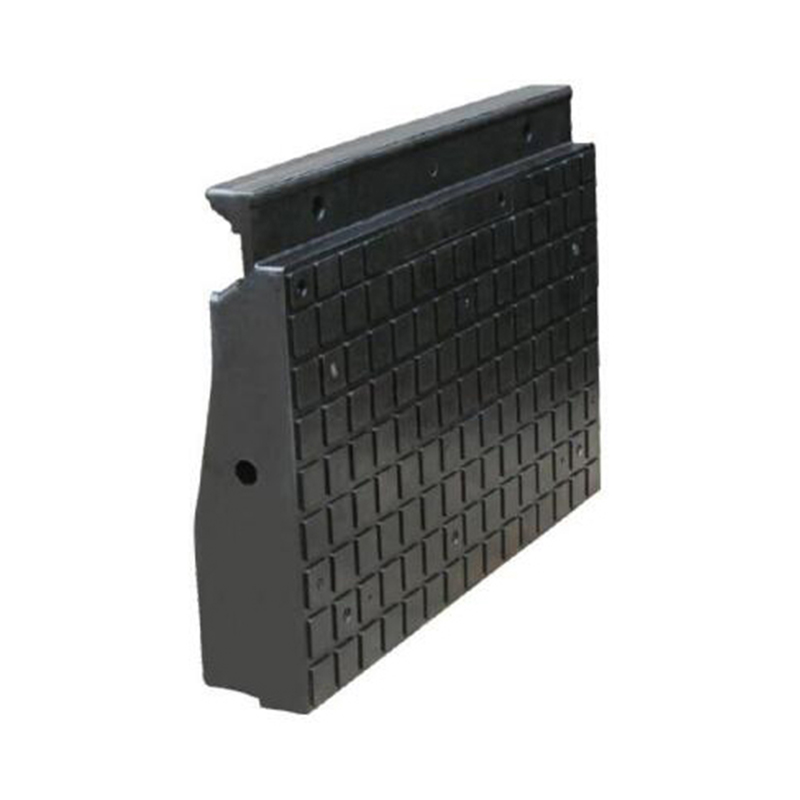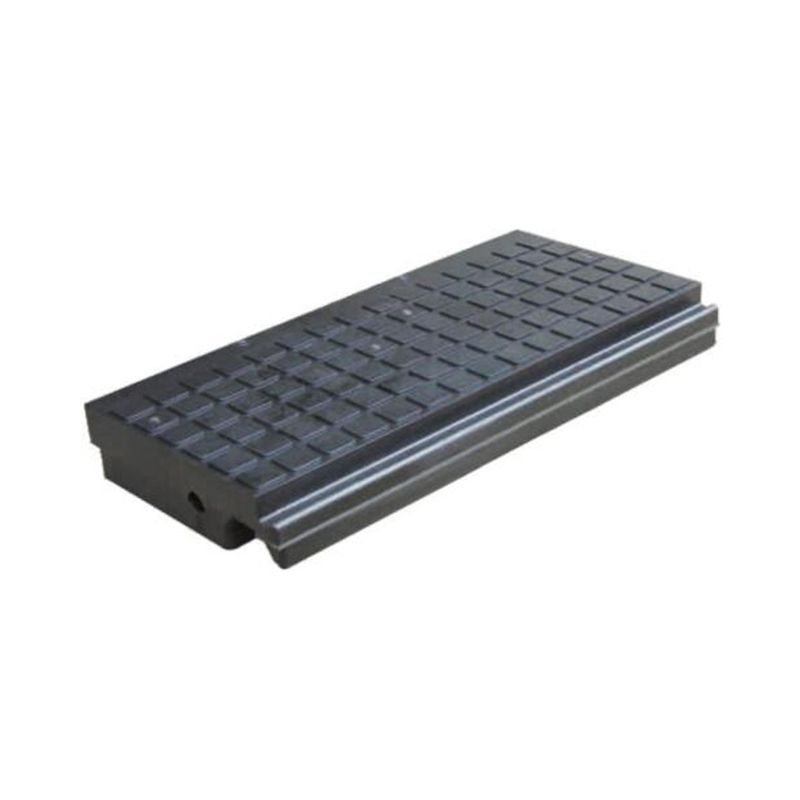Construction scheme of rubber crossing (standard and relevant technical requirements)
The construction standards and related technologies of crossing slabs are formulated according to the relevant national and industry standards and the business contracts or technical agreements signed by both parties. Our company guarantees that according to your company's requirements, the construction will be carried out in sections to ensure the normal progress of production and traffic, and the task will be completed with high quality within the 15-day construction period.
1. Preparations before laying rubber crossing slabs:
1. All rubber crossings are protected by cement baffles.
2. The width of the crossing cement retaining wall is 1000mm, the depth is 500mm, and the length is flush with the curbs on both sides of the road.
3. Use 10mm (thickness) x 300mm (width) flat steel (flat steel vertically placed) at the interface between the cement retaining wall and the outer side of the rubber crossing plate to protect the horizontal mud surface.
4. One side of the upper plane of the cement retaining wall is flush with the plane of the rubber crossing plate, and the other side is flush with the upper plane of the road.
5. If there are special requirements, the construction shall be carried out according to special requirements.
2. Safety work before construction:
1. Handle the safety measures for crossing construction approved by your company and the superior department before construction, and post a notice near the crossing in written form.
2. Construction must have a safety guardian. Guardrails, instructions, and protective flags on the construction site must be set up in accordance with relevant safety regulations.
3. When digging the cement foundation or replacing the sleepers, the road closure or semi-closure procedures must be completed; when the sleepers are replaced, the railway closure procedures must be completed.
4. Single-phase power supply and control switch should be equipped for on-site construction.
3. Standards for laying rubber cross ties:
1. When the paved crossing requires new sleepers, the upper plane should be flat.
2. When crossing sleepers are adjusted, it is required that the sleepers be adjusted to be at right angles to the center line of the railway, and the centering distance between the sleepers is 550mm.
3. If there is a turnout at the crossing, your company will determine the distance between the sleepers of the turnout on site, but it must meet our laying standards, and your company will bear the excess amount.
The paving board adopts new formula and Add nylon inlay or radial synthesis, rubber surface wear resistance, corrosion resistance, high strength, pressure resistance, impact resistance, good insulation effect, etc. Standardized design and manufacture Standardized design and manufacture, strong interchangeability, simple installation and convenient laying. As the rubber tire body has excellent shock absorption, vehicles and pedestrians pass smoothly, quickly and safely, and can be free from routine maintenance and repair. It is free from daily maintenance and repair. The board is equipped with rim groove, railroad spike and sleeper bolted together, good integrity, beautiful and comfortable appearance, easy to clean and manage. and management. The overall sealing effect is excellent, anti-slip and moisture-proof, and the surface can be kept dry in rain and snow. The rubber inlay is the most advanced product in the world at present. The product is a domestic blank, replacing the original steel and cement paving board, with strong force, shockproof performance, good insulation performance, wear-resistant, repeated compression deformation Less, high strength, aging resistance, no mud, long service life, etc., by simulation from 150,000 times to 450,000 times, the service life of up to 10-15 years.
In line with the railroad speed and environmental protection requirements. The use of it can improve the transport capacity of motor vehicles, reduce the number of road crossing maintenance, to avoid the motor vehicle stalled and caused by The use of it can improve the transport capacity of motor vehicles, reduce the number of crossing maintenance, and avoid traffic accidents caused by stalled motor vehicles. Whether from the safety, economic, environmental protection, social benefits, etc. are worth promoting the application. (The concrete crossing board is easily damaged, and the railroad crossing The product is more convenient than the original paving board.) The product is more than the original paving board with a life of more than three times



 English
English Español
Español 中文简体
中文简体























